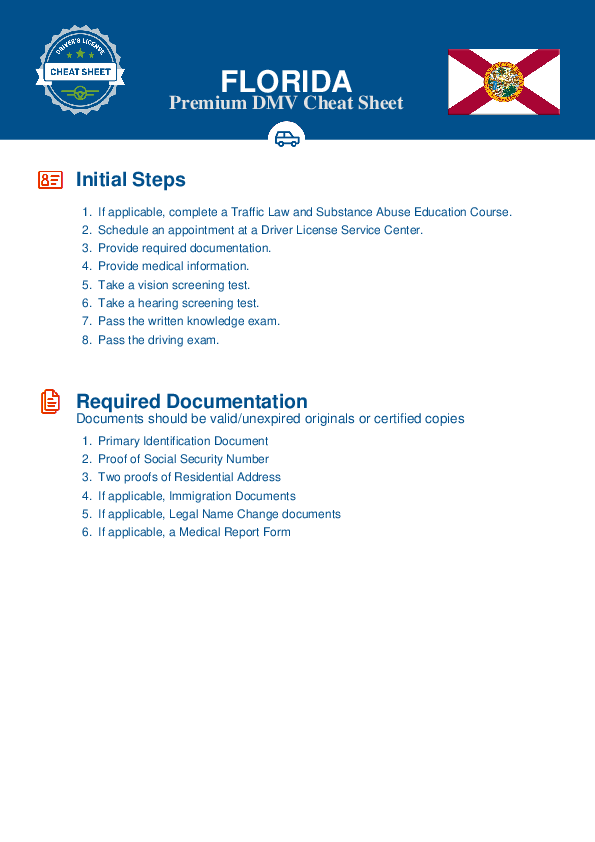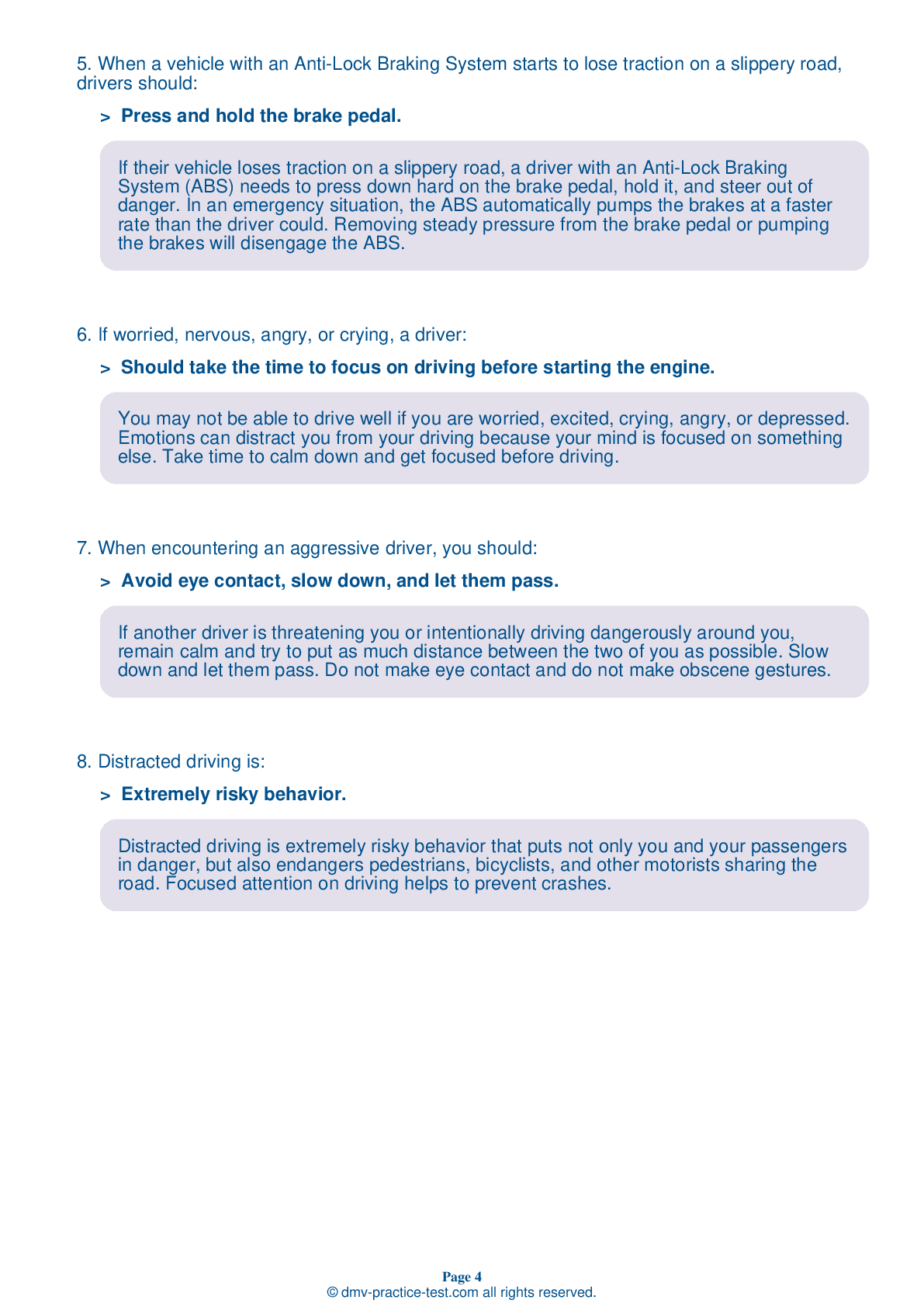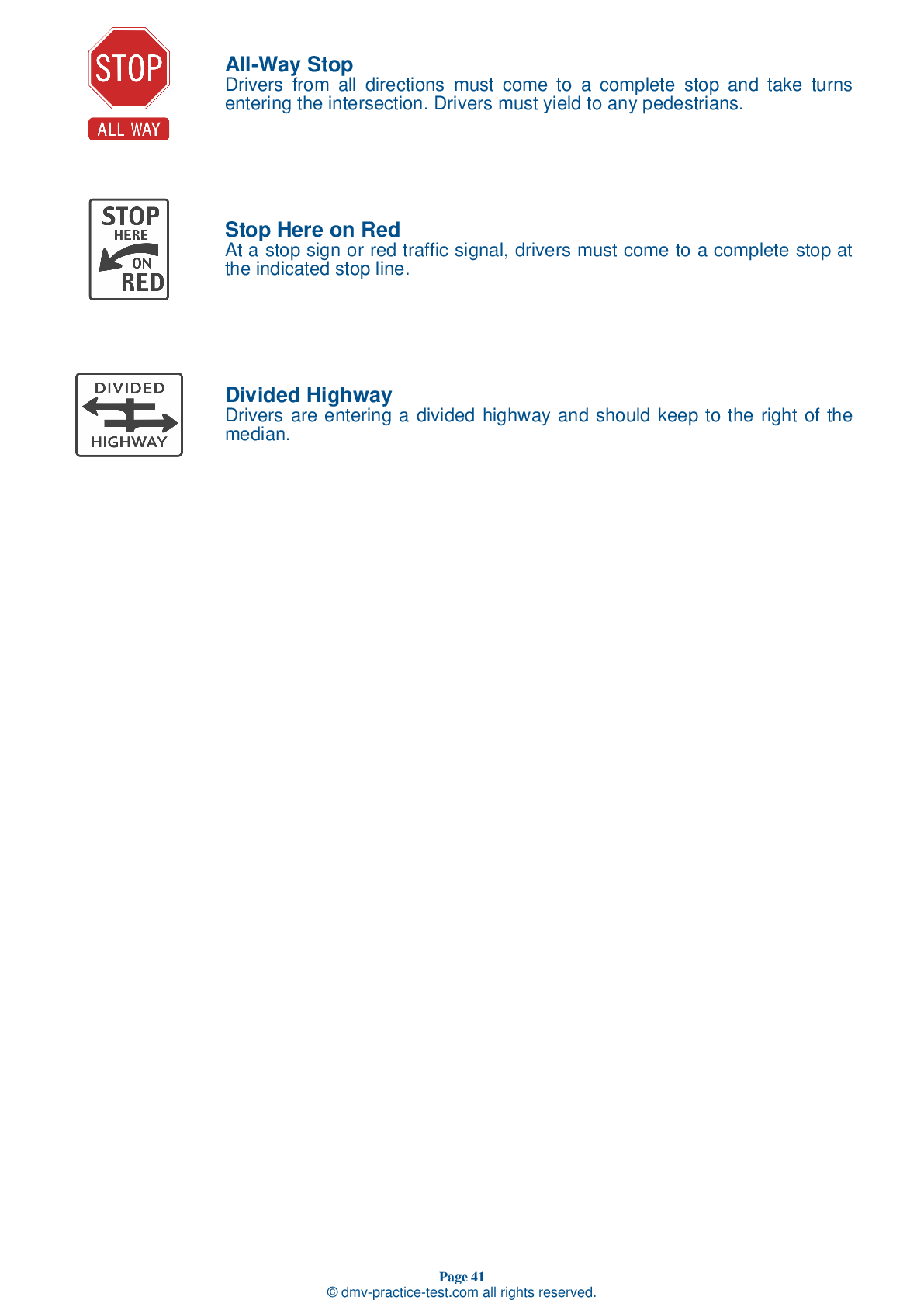FREE Florida DMV Practice Test #11 Page 2 of 7
This set of DMV practise tests for the Florida has been updated for January 2026. It includes questions based on the most important traffic signs and laws for 2026 from the Florida Driver Handbook. To study for the DMV driving permit test and driver's licence exam, use actual questions that are very similar (often identical!) to the DMV driving permit test and driver's licence exam.
Each question on the practise exam has a tip and explanation to help you recall the ideas. Questions about traffic rules, traffic signs, and driving statutes, as well as information from the Driver Handbook, will be included in the written portion of the official DMV test.
You must properly answer 40 of the 50 questions to receive the required passing mark. To help you prepare for your Florida instruction permit or driver's licence, take our DMV practise test.
The DMV exam is offered in a variety of languages.
Using any kind of testing assistance will result in an automatic fail, and the DMV may take additional action against your driver's licence, so stay away from it.
8 . If an approaching train is near enough or going fast enough to be a danger, you must:
You should look and listen for trains before crossing any railroad tracks. If an approaching train is near enough or going fast enough to be a danger, you cannot go across the tracks. This is true even if they have no signals or the signals are not working.
9 . Traffic signals sometimes display arrows to control turns from specific lanes. A solid red arrow:
A solid red arrow in a traffic signal means the same thing as a circular red traffic light. When an arrow is red, traffic in the indicated lane must stop and may not turn in the direction that the arrow is pointing.
10 . This sign means:

This sign indicates that hospital emergency services are located to the right.
11 . An octagonal sign is always a:
Octagonal signs are always stop signs. Come to a complete stop when approaching a red, eight-sided sign.
12 . What can you do to avoid the need to make emergency stops while driving in traffic?
Keeping a safe following distance will enable you to react to an upcoming problem without the need for a emergency stop, which could cause a driver behind you to crash into the back of your vehicle.
13 . On slippery roads, you should:
You should slow down at the first sign of rain, snow, or sleet, all of which can create slippery road conditions. When conditions on the road are less than ideal, safety may require that you drive more slowly than the posted speed limit.
14 . To safely pass a bicycle, you should:
When passing a bicyclist, slow down and give them as much space as you can. Bicyclists have much less protection than drivers of motor vehicles and they should not be crowded. Passing a bicycle too quickly can shift the bicyclist off-course.
See the exact questions that will be on the 2026 Florida DMV exam.
99.2% of people who use the cheat sheet pass the FIRST TIME
LT gives us an insight on how the cheat sheet provided her with all the study questions she needed before taking her test.
Joe initially studied with the handbook and failed his test, he eventually found us online, studied and pass his test the first time around.



